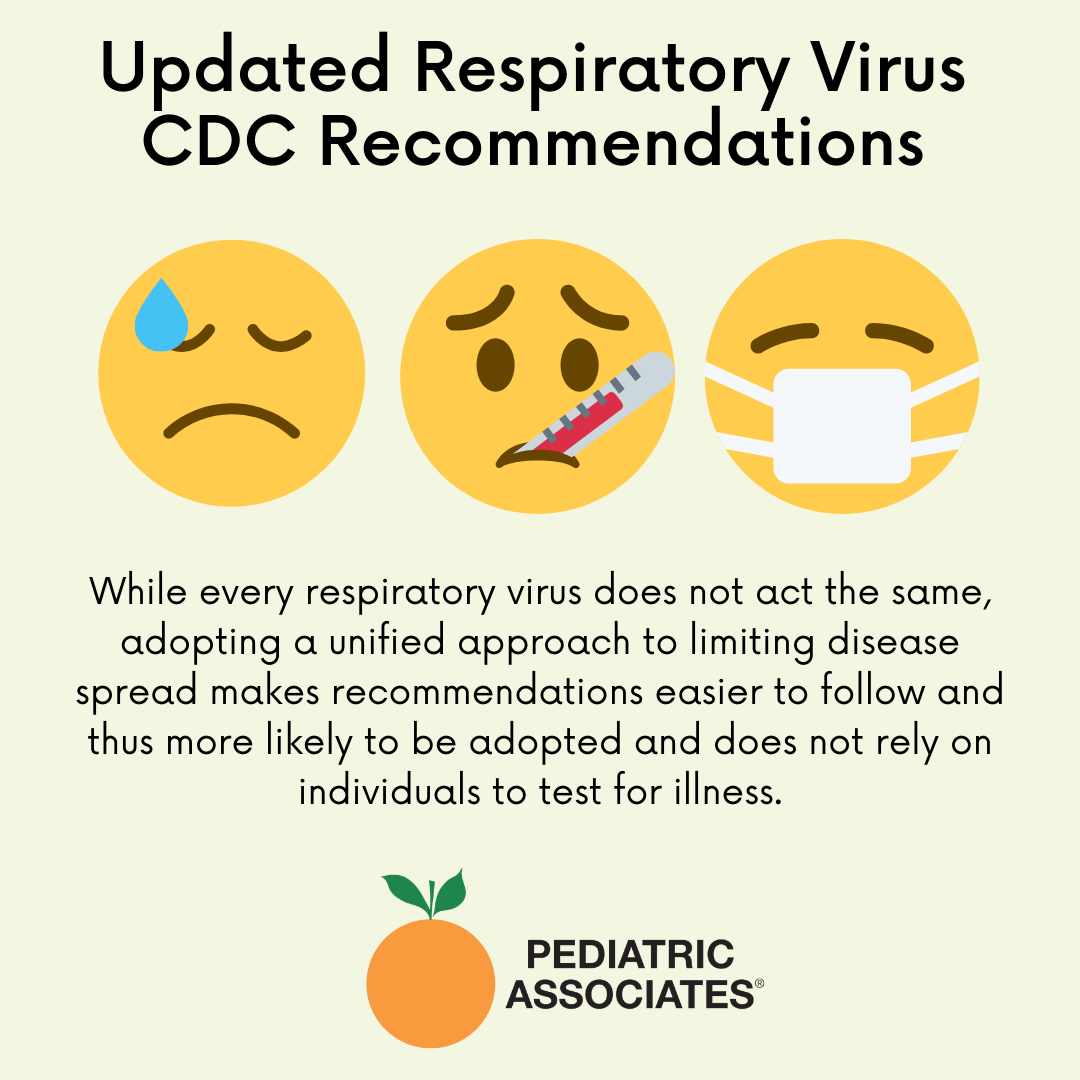
As the country marks the four-year anniversary of the COVID-19 pandemic, the U.S. Center for Disease Control and Prevention (CDC) recently released updated recommendations for how people can protect themselves and their communities from respiratory viruses, including COVID-19. The guidance, which matches public health advice for the flu and other respiratory illnesses, is this: stay home when you’re sick, but return to school or work once you’re feeling better and you have been without a fever for 24 hours without medication.
While every respiratory virus does not act the same, adopting a unified approach to limiting disease spread makes recommendations easier to follow and thus more likely to be adopted and does not rely on individuals to test for illness.
In addition to the recommendations of the CDC, we have included some helpful tips to keep your family safe and healthy.
Treatment of Symptoms
- The treatment is the same whether you have COVID-19, influenza or some other respiratory virus.
- Treat the symptoms that are bothering you the most.
- Antiviral treatments are available for patients who are at high-risk for complications.
- Antibiotics are not helpful for viral infections.
- You don’t need to see your doctor unless you develop trouble breathing or become worse in any other way.
Home Precautions
- As with any respiratory illness, you should remain home until symptoms are improving.
- You can go back to your normal activities when, for at least 24 hours, both are true: Your symptoms are getting better overall, and you have not had a fever (and are not using fever-reducing medication).
- Students should follow their school’s COVID-19 policy.
- Consider taking additional precautions for 5 days after symptom onset. These precautions may include taking more steps for cleaner air, enhancing hygiene practices, wearing a well-fitting mask, and keeping a distance from others.